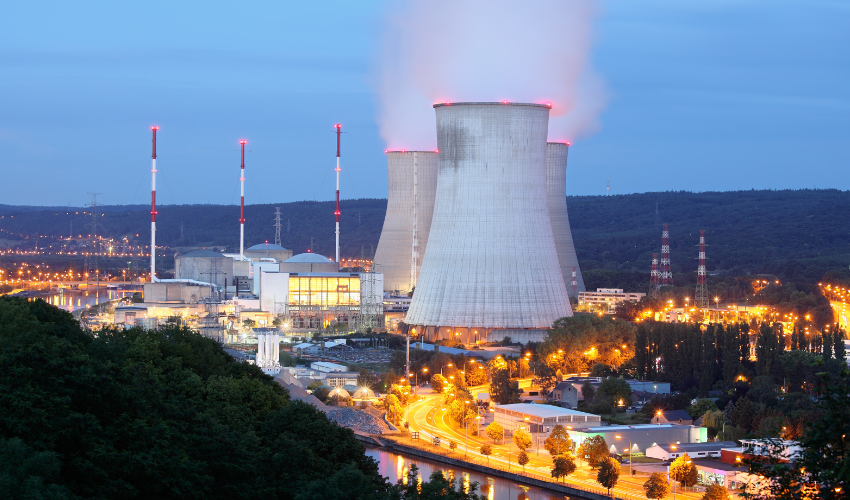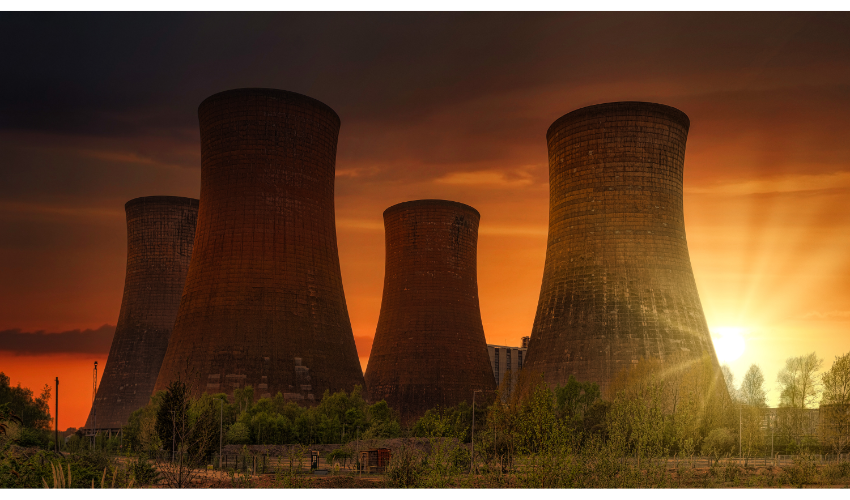Nuclear power plants have long been a topic of controversy and curiosity. While some praise them for their efficiency and potential to provide clean energy, others have expressed concerns over safety and environmental impact. Regardless of personal beliefs, it’s important to understand how these plants work and how they fit into the larger energy landscape.
In this article, we’ll explore the inner workings of nuclear power plants, from the production of fuel to the generation of electricity. We’ll cover the basic principles of nuclear physics and engineering, and provide answers to some common questions about nuclear energy. So let’s dive in!

Basic Principles of Nuclear Reactions
Nuclear reactions involve the splitting or combining of atomic nuclei, which releases a large amount of energy. In nuclear power plants, the reactions used are typically fission reactions, in which the nucleus of an atom is split into two smaller nuclei, releasing energy in the process.
Components of a Nuclear Reactor
Nuclear reactors consist of several key components, including fuel rods, control rods, a moderator, and a coolant. The fuel rods contain the nuclear fuel, typically uranium or plutonium, which undergoes nuclear reactions. Control rods are used to regulate the rate of the nuclear reactions, while the moderator slows down the neutrons produced in the reactions. The coolant, usually water, is used to transfer heat away from the reactor.

The Process of Generating Electricity
The nuclear reactions in the reactor generate heat, which is used to produce steam. The steam then drives a turbine, which is connected to a generator, producing electricity. The electricity is then transmitted to the power grid and distributed to homes and businesses.
How do Nuclear Power Plants Work?
Nuclear power plants generate electricity by harnessing the heat energy released from nuclear fission – the splitting of atomic nuclei. Here’s a simplified overview of the process:
- Fuel production: Nuclear fuel is typically produced from uranium ore, which is mined and processed to extract uranium-235, the isotope used in most nuclear reactors. The extracted uranium is then enriched to increase its concentration of U-235.
- Reactor core: The reactor core contains the fuel rods, which are made up of uranium pellets. These pellets are arranged in a way that allows for a controlled chain reaction, which releases heat energy.
- Moderation and control: The nuclear reaction is moderated by materials such as graphite or heavy water, which slow down the neutrons released during fission. Control rods made of materials such as boron or cadmium are used to absorb excess neutrons and regulate the reaction.
- Heat exchange: The heat generated from the reactor core is transferred to water or another coolant, which turns into steam and drives a turbine to generate electricity.
- Electricity distribution: The electricity produced by the turbine is sent to a transformer, which converts it to a higher voltage for transmission over power lines to homes and businesses.
Safety Measures in Nuclear Power Plants
Nuclear power plants are designed with numerous safety measures to prevent accidents and minimize their impact. Emergency cooling systems are in place to prevent the reactor from overheating, while radiation protection measures are used to protect workers and the environment from exposure to radiation. Nuclear waste is carefully managed and disposed of to prevent contamination of the environment.
Bullet Points
- Nuclear power plants generate electricity by harnessing heat energy from nuclear fission.
- Fuel rods contain uranium pellets that undergo controlled chain reactions to produce heat.
- The nuclear reaction is moderated by materials that slow down released neutrons.
- Control rods absorb excess neutrons and regulate the reaction.
- Heat generated from the reactor core is transferred to a coolant, which drives a turbine to generate electricity.
- The electricity is sent to a transformer and converted to a higher voltage for transmission over power lines to homes and businesses.
- Nuclear power plants can operate continuously for long periods without producing greenhouse gases or air pollutants.
- However, the production and management of nuclear fuel and waste can have significant environmental impacts and safety concerns.
FAQs
What is the difference between nuclear energy and other forms of energy?
Nuclear energy is generated by the splitting of atomic nuclei, whereas other forms of energy such as fossil fuels or renewable sources rely on chemical or physical reactions.
How is nuclear waste disposed of?
Nuclear waste is typically stored in specialized containers at nuclear power plants or in underground repositories. The long-term storage and management of nuclear waste remains a significant challenge.
Can nuclear power plants explode like nuclear bombs?
No. Nuclear power plants are designed with multiple layers of safety features and containment structures to prevent catastrophic events like a nuclear explosion.
What are the risks of nuclear power plants?
Nuclear power plants can provide clean energy. However, they also pose risks such as nuclear accidents, environmental contamination, and the proliferation of nuclear weapons.
Are there any alternative forms of nuclear energy?
Yes. Alternative forms of nuclear energy such as nuclear fusion and small modular reactors are being developed as potential solutions to the challenges of traditional nuclear power.
Conclusion
Nuclear power plants are complex machines that harness the power of nuclear fission to generate electricity. While they have the potential to provide clean energy, their production and management of fuel and waste pose significant environmental and safety challenges. Understanding the inner workings of nuclear power plants is crucial for informed discussions and decisions about energy policy and sustainability. By balancing the benefits and risks of nuclear energy, we can work towards a more sustainable and secure energy future.























